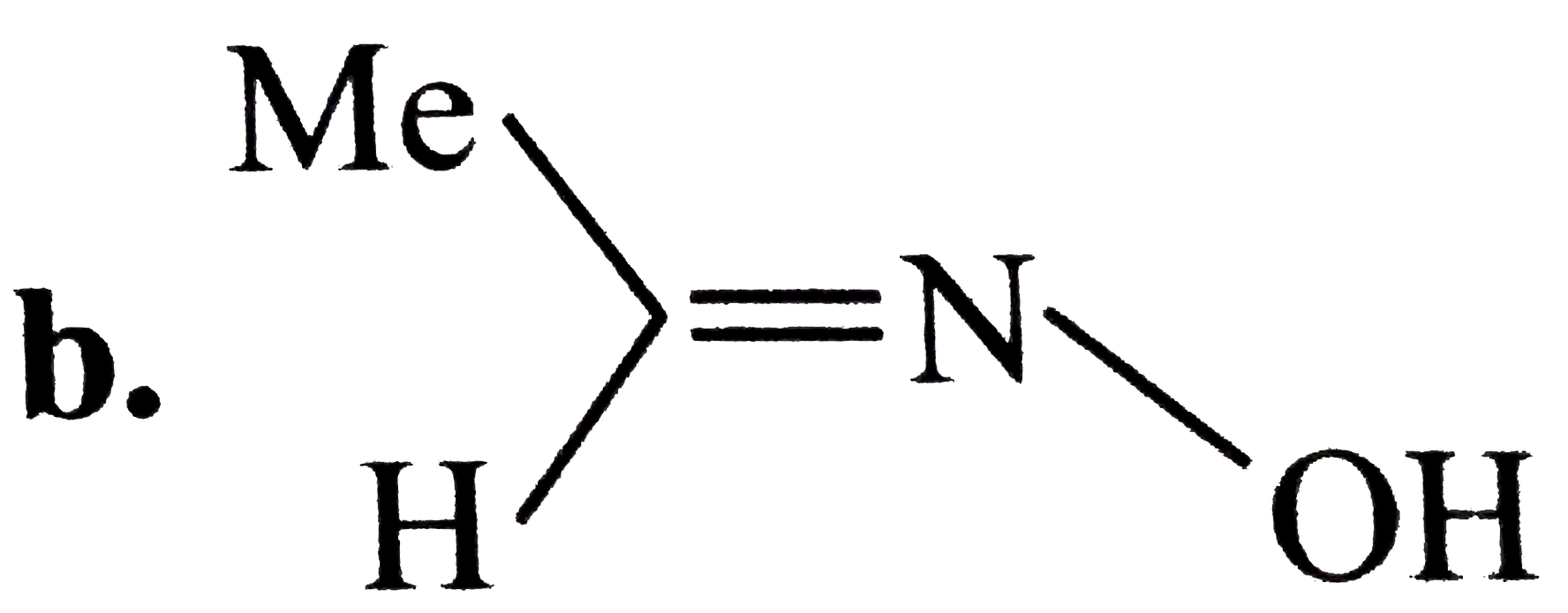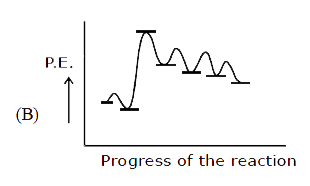C3H6O(A)↓Gives positiveTollen's testPhCHO−−−−−→OH−/ΔB
Product B is :
Ph−CH=C | CH3−CH3

Ph−CH3| C =CH−Ph
Ph−CH=C | CH3−CHO
The correct Answer is:D
To solve the problem, we need to identify the product B formed when a compound with the formula C₃H₆O (which gives a positive Tollen's test) reacts with benzaldehyde (PhCHO) in the presence of hydroxide ions (OH⁻) and heat.
1. Identify the structure of C₃H₆O:
- Since C₃H₆O gives a positive Tollen's test, it indicates that it is either an aldehyde or an alpha-hydroxy ketone. The only possible aldehyde with three carbon atoms is propanal (CH₃CH₂CHO).
2. Understanding Tollen's Test:
- Tollen's reagent is used to detect aldehydes. A positive result indicates the presence of an aldehyde functional group, which can be oxidized to a carboxylic acid.
3. Reaction with Benzaldehyde:
- The reaction involves propanal (C₃H₆O) reacting with benzaldehyde (PhCHO) in the presence of hydroxide ions (OH⁻) and heat. This is indicative of an aldol condensation reaction.
4. Formation of Carbanion:
- The hydroxide ion (OH⁻) abstracts a proton from the alpha carbon of propanal, creating a carbanion. This carbanion is then nucleophilic and can attack the carbonyl carbon of benzaldehyde.
5. Nucleophilic Attack:
- The carbanion formed from propanal attacks the carbonyl carbon of benzaldehyde, resulting in the formation of a β-hydroxy aldehyde.
6. Dehydration:
- Upon heating, the β-hydroxy aldehyde undergoes dehydration (loss of water) to form an α,β-unsaturated aldehyde.
7. Final Product B:
- The final product after dehydration will be an α,β-unsaturated aldehyde, specifically cinnamaldehyde (CH₃CH=CHCHO).
Conclusion:
The product B formed from the reaction is cinnamaldehyde.
- Since C₃H₆O gives a positive Tollen's test, it indicates that it is either an aldehyde or an alpha-hydroxy ketone. The only possible aldehyde with three carbon atoms is propanal (CH₃CH₂CHO).
- Tollen's reagent is used to detect aldehydes. A positive result indicates the presence of an aldehyde functional group, which can be oxidized to a carboxylic acid.
- The reaction involves propanal (C₃H₆O) reacting with benzaldehyde (PhCHO) in the presence of hydroxide ions (OH⁻) and heat. This is indicative of an aldol condensation reaction.
- The hydroxide ion (OH⁻) abstracts a proton from the alpha carbon of propanal, creating a carbanion. This carbanion is then nucleophilic and can attack the carbonyl carbon of benzaldehyde.
- The carbanion formed from propanal attacks the carbonyl carbon of benzaldehyde, resulting in the formation of a β-hydroxy aldehyde.
- Upon heating, the β-hydroxy aldehyde undergoes dehydration (loss of water) to form an α,β-unsaturated aldehyde.
- The final product after dehydration will be an α,β-unsaturated aldehyde, specifically cinnamaldehyde (CH₃CH=CHCHO).
The product B formed from the reaction is cinnamaldehyde.
Topper's Solved these Questions
Similar Questions
Knowledge Check
underset("परीक्षण देता है" )underset("धनात्मक टोलेन")underset(darr)(C_(3)H_(6)O(A))(PhCHO)/(OH^(-)//Delta)B
"उत्पाद" B है:APh−CH=C↓CH3−CH3B CPh−CH3↑C=CH−PhDPh−CH=C↓CH3−CHO
CPh−CH3↑C=CH−PhDPh−CH=C↓CH3−CHOMeCH(A)=O+H2NOH(B)HCOONa−−−−−→Δ(C)+H2O Product (C ) is:
A B
B CMe−C≡ND
CMe−C≡ND
Ph−Ph∣C∣H−H∣C∣CH3−CH2−OHH+−−→Δ Product
Select the correct P.E. graph for major product.A B
B C
C DNone
DNone
CH3−CH3∣C∣OH−CH3∣C∣OH−CH3H+−−→Δ(P) (Major)
Major product (P) is :
View SolutionCH3−O∣∣C−OHND3−−−−−→Δ(A)Br2−−−−−→KOH(B)
Product (B) is -
View SolutionIdentify (A) in the following reaction sequence
AGives Positiveiodoform test(i) CH3MgBr−−−−−−−−−−−→(ii) H+,H2O(iii) Conc. H2SO4/Δ(B)O3/Zn,H2O−−−−−−−→
View SolutionPh−OH∣C∣Me−Me∣C∣I−PhAgNO3−−−→Δ? Major product is
View Solution(A)SymmetricalKetoneLiAlH4−−−→(B)H⊕−−−−−→Δ Diastereomers
Reactent (A) is :
View Solution

